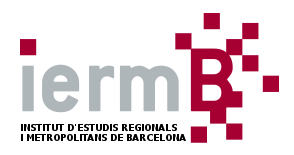Space-time dynamics of urban systems from satellite images of night lighting. Urban progress scenarios for European metropolitan regions
Authors:
- Aureli Alabert (Department of Mathematics, Autonomous University of Barcelona)
- Joan Marull (Institut d’Estudis Regionals i Metropolitans de Barcelona)

- Albert Ruiz (Department of Mathematics, Autonomous University of Barcelona)
- Francesc Coll Pujol (Institut d’Estudis Regionals i Metropolitans de Barcelona)
- Maria Miranda (Department of Mathematics, Autonomous University of Barcelona)
- Roc Padró (Institut d’Estudis Regionals i Metropolitans de Barcelona)

Year: 2021
The aim of this study was to use satellite imagery of metropolitan regions to develop a method for predicting the evolution of Night-Time Light (NTL) and design a mathematical cellular automata model to predict urban progress scenarios. In order to validate the model with real data, we used NTL for 1992–2012 from the European NUTS-2 region of Catalonia. Lighted surface scenarios (as an estimate of urban expansion) were calculated using variations in light intensity (as an estimate of economic activity). In all, we applied the model to twelve NUTS-3 European metropolitan regions. The model gives us three kinds of useful information related to urban surface areas: the main one is a NTL urban surface baseline, which in turn was used in calibration/validation processes; the second one is a regression line for NTL intensity and economic activity; finally, we found a good coarse approximation to urban shape in urban progress scenarios. Since NTL is available for the entire globe, the model could be used to study urbanization dynamics in metropolitan regions for which, in particular, socio-economic data is not available at this territorial scale, and even megaregions emerging as global economic units.
Alabert, A., Marull, J., Ruiz, A., Coll Pujol, F., Miranda, M., & Padró, R. (2021). Space-time dynamics of urban systems from satellite images of night lighting. Urban progress scenarios for European metropolitan regions. Computers, Environment and Urban Systems, 86(101587), https://doi.org/10.1016/j.compenvurbsys.2020.101587







